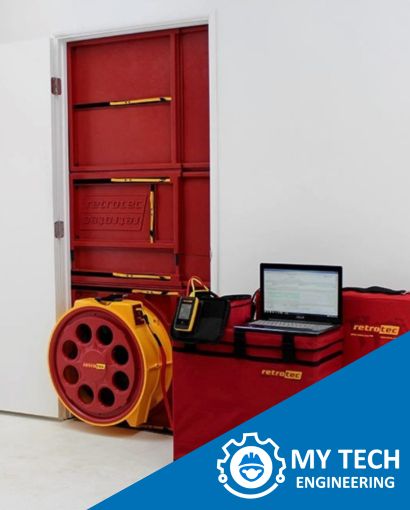Room Integrity Testing
Room Integrity Testing
Room integrity testing is a process used to assess the effectiveness of a room or enclosure’s integrity in retaining a fire suppression agent, especially in areas protected by gaseous fire suppression systems. These systems, such as those using clean agents like FM-200 or Novec 1230, rely on maintaining a certain concentration of the extinguishing agent within the protected space for a sufficient duration to effectively suppress a fire.

Purpose:
- The primary purpose of room integrity testing is to ensure that the sealed enclosure can maintain the required concentration of the fire suppression agent for a specified period. This testing is critical to the effectiveness of gaseous fire suppression systems.
Testing Process:
Sealing the Room: Before testing, the room or enclosure is sealed to simulate its condition during a fire event. This includes closing doors, windows, dampers, and other openings that could potentially allow the suppression agent to escape.
Introducing Simulated Leakage: Controlled leakage is introduced into the room using a calibrated fan system or other means to simulate the potential loss of gas through any openings.
Measuring Leakage Rates: Specialized equipment measures the rate of gas leakage from the room. This information is then used to calculate how long the room can maintain the required concentration of the fire suppression agent.
Acceptance Criteria:
- Room integrity testing is typically performed to ensure that the enclosure meets specific criteria outlined in relevant standards and guidelines. The criteria often include allowable leakage rates and the required retention time for the fire suppression agent.
Regulatory Standards:
- International standards and guidelines, such as NFPA 2001 (Standard on Clean Agent Fire Extinguishing Systems) or ISO 14520 (Gaseous fire-extinguishing systems), provide guidance on room integrity testing procedures, acceptance criteria, and related considerations.
Benefits:
- Conducting room integrity testing helps identify potential issues with the enclosure’s integrity, allowing for corrective measures to be taken. This ensures that the fire suppression system will function as intended in the event of a fire.
Frequency:
- Room integrity testing is typically conducted during the initial installation of a gaseous fire suppression system and may be required periodically thereafter. Regular testing is important to account for changes in the integrity of the room over time.
GET YOUR FREE CONSULTATION
My Tech offers a Wide variety of services to cater your problematic situations.










